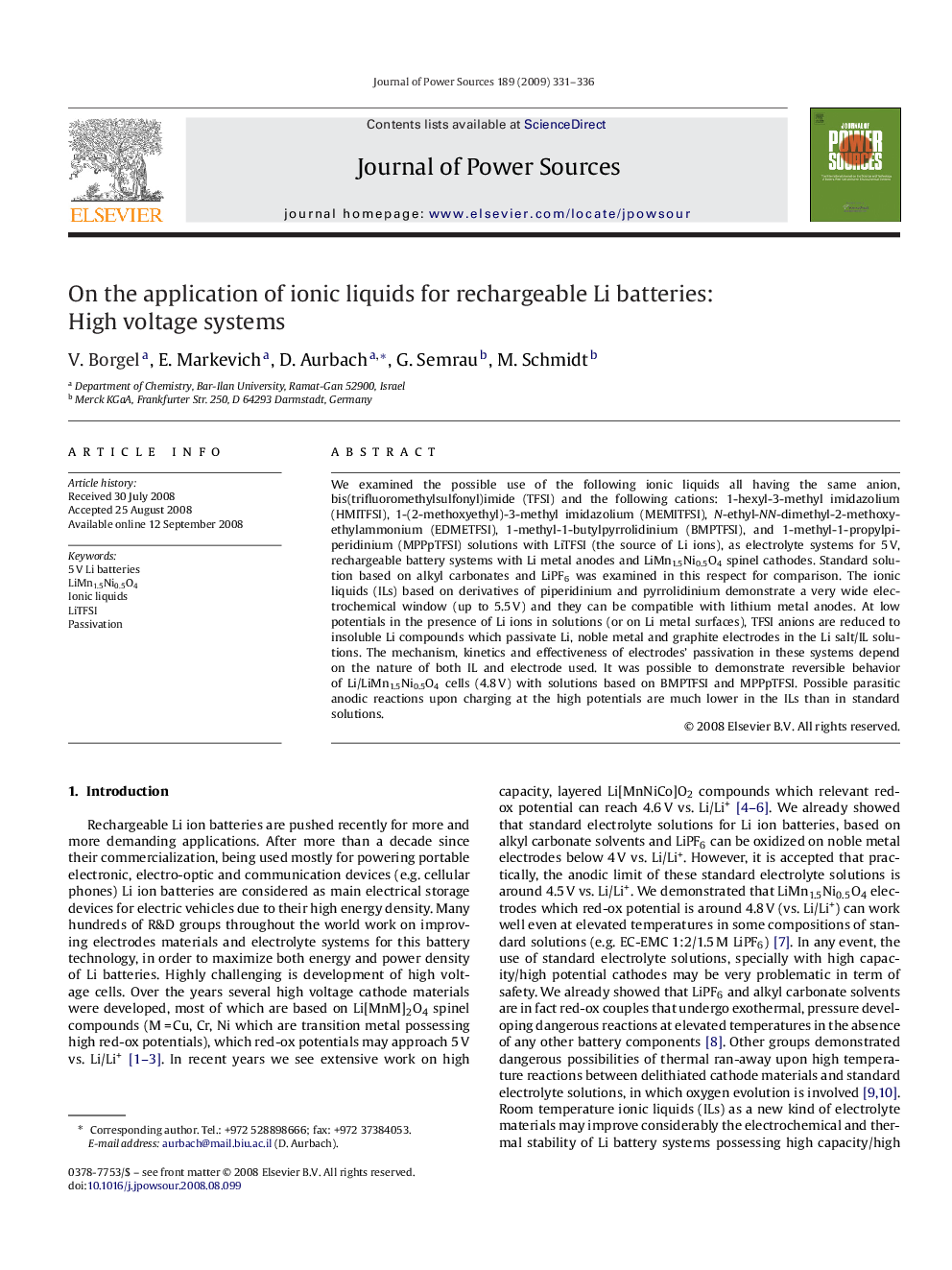| Article ID | Journal | Published Year | Pages | File Type |
|---|---|---|---|---|
| 1291191 | Journal of Power Sources | 2009 | 6 Pages |
We examined the possible use of the following ionic liquids all having the same anion, bis(trifluoromethylsulfonyl)imide (TFSI) and the following cations: 1-hexyl-3-methyl imidazolium (HMITFSI), 1-(2-methoxyethyl)-3-methyl imidazolium (MEMITFSI), N-ethyl-NN-dimethyl-2-methoxyethylammonium (EDMETFSI), 1-methyl-1-butylpyrrolidinium (BMPTFSI), and 1-methyl-1-propylpiperidinium (MPPpTFSI) solutions with LiTFSI (the source of Li ions), as electrolyte systems for 5 V, rechargeable battery systems with Li metal anodes and LiMn1.5Ni0.5O4 spinel cathodes. Standard solution based on alkyl carbonates and LiPF6 was examined in this respect for comparison. The ionic liquids (ILs) based on derivatives of piperidinium and pyrrolidinium demonstrate a very wide electrochemical window (up to 5.5 V) and they can be compatible with lithium metal anodes. At low potentials in the presence of Li ions in solutions (or on Li metal surfaces), TFSI anions are reduced to insoluble Li compounds which passivate Li, noble metal and graphite electrodes in the Li salt/IL solutions. The mechanism, kinetics and effectiveness of electrodes’ passivation in these systems depend on the nature of both IL and electrode used. It was possible to demonstrate reversible behavior of Li/LiMn1.5Ni0.5O4 cells (4.8 V) with solutions based on BMPTFSI and MPPpTFSI. Possible parasitic anodic reactions upon charging at the high potentials are much lower in the ILs than in standard solutions.
